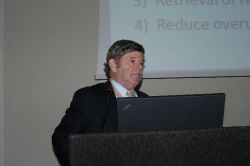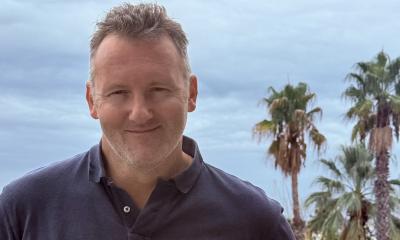MIR 2012: The Golden Age of radiological imaging is shifting into the past
It lasted forty years – but now it’s over – that Golden Age of radiology and medical imaging is surrendering under technology stagnation and imaging issues such as the growing rejection of unnecessary public use. The field is now subject to radical change, declared Professor Stephen R Baker MD M.Phil, from the UMDNJ New Jersey Medical School in Newark, New Jersey USA, speaking at this year’s Management in Radiology (MIR) Conference in Milan, Italy.


Radiology’s Golden Age lasted from 1970 to 2010. Its key ingredients included the discovery of new energy sources to create medical images – ultrasound, MRI and nuclear medicine. The emergence of cross-sectional imaging with CT scanning was another important aspect. In the ’90s, major breakthroughs marked the technological progress in both CT and MRI. Further key contributions came from PACS and tele-radiology, which served to revolutionise communication.
Radiology: ‘radiant’ no more
Numerous reasons have led to the demise of radiology’s radiance, the expert explained. On the one hand, no new imaging sources are in the pipeline that would lend themselves to comparison with the groundbreaking discoveries in the 1990s. On the other hand, there is a widespread perception that a vast number of procedures are being carried out that are not necessary; dose and patient harm are under scrutiny by regulators. Budget restrictions in most health systems are showing a serious impact on high-cost diagnostic imaging procedures. ‘Our field has entered a period of reconsideration,’ Prof. Baker summarised.
The role of radiologists is also undergoing a transformation. To an increasing extent they are being made obsolete by peers in other disciplines, technologists and also by the technology. An illustration of this trend is virtual colonoscopy, which is performed by technologists. Computer-aided decision-making is evolving in breast and chest cancer detection; and software can automatically determine the status of liver tumours. In this context, ‘Radiologists need to redefine their role if they wish to continue doing their jobs – or having a job – in the future’, according to Prof. Baker.
Interaction and involvement could help them to survive
Radiologists have tended to be active, to some extent, in silos. Teleradiology takes them even further away from their referrers, their peers in other disciplines and from clinical interaction. In order not to become anonymous and obsolete they need to reassert their position in the physical clinical context. That is, they should discuss readings with physicians in the other departments and reassume their role in the coordination of care. ‘To become a virtuoso, you need to be there and interact’ Prof. Baker said, characterising one of the approaches that could help to stop radiologists from becoming a dying species.
22.01.2013











